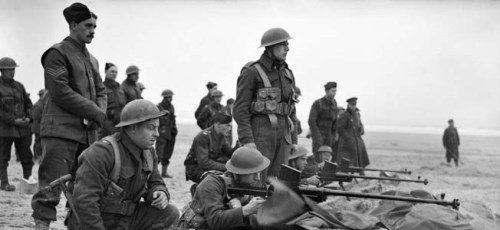The Boys Anti-Tank Rifle,Invented by Captain H. C. Boys and adopted by the British Army in 1937, the
The Boys Anti-Tank Rifle,Invented by Captain H. C. Boys and adopted by the British Army in 1937, the Boys Anti-Tank rifle was Britain’s early attempt to provide an effective infantry portable weapon capable of stopping tanks and other armored vehicles. Chambered for a powerful .55 caliber cartridge, the Boys was a bolt action rifle which was fed from a top mounted 5 round magazine. Its .55 caliber cartridge was an adaptation of the .50 BMG and fired a 47.6 gram bullet at almost 2,900 feet per second. At 100 yards it was rated to pierce 23mm of steel armor, around 19mm at 500 yards. Typically, they were outfitted with a shock resistant bipod as well as a muzzle mounted recoil compensator in order to mitigate the excess recoil of such a powerful weapon. Overall the weapon and bipod setup weighed around 35 pounds. As well as being used by British forces, the Boys rifle was exported to the United States, Canada, China, the USSR, Finland, and Sweden. A number were issued to the US Marines and used by Marine Corps raiders in the early years of the war in the Pacific.At the beginning of World War II the Boys Anti Tank Rifle was effective against light German tanks such as the Panzer I, II, and early models of the Panzer III. However as the war dragged on, tanks became larger with thicker armor, and thus the Boys Rifle became less and less effective. In addition, the complicated engineering behind the Boys made the rifle extremely difficult to maintain, the rifle also gained a reputation for unreliability. By 1943 the Boys was being phased out for the more effective Piatt Anit Tank Projector. Around 62,000 were produced between 1937 and 1940. -- source link
#guns#firearms#rifles#anti-tank#history#wwii


